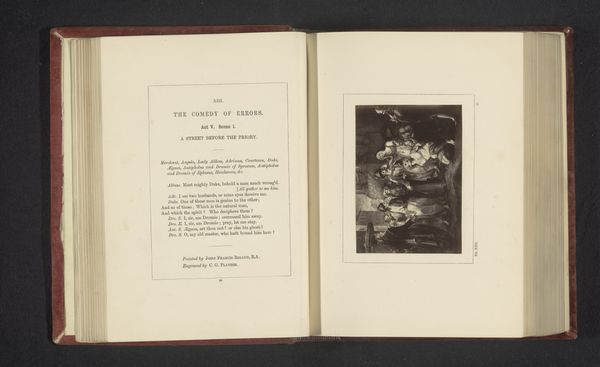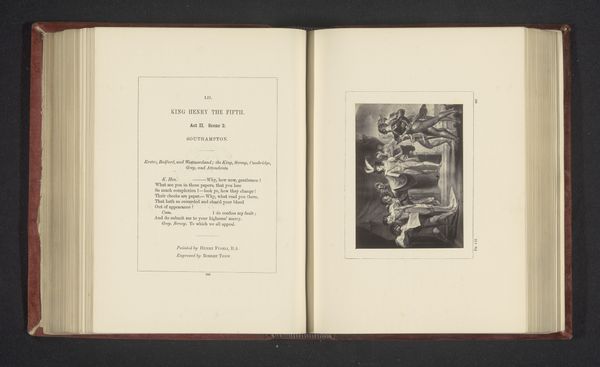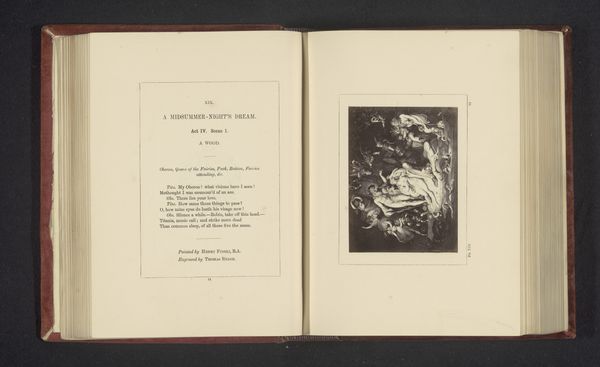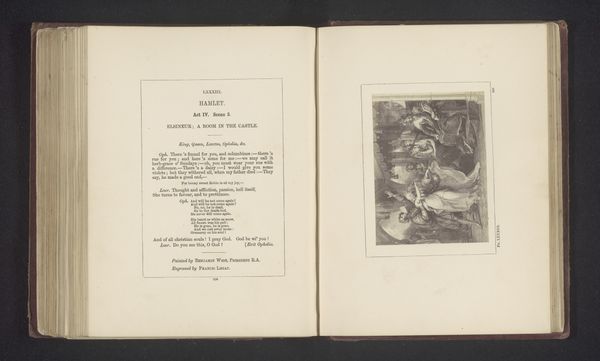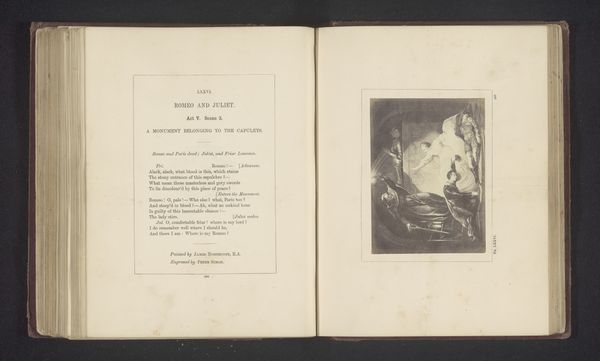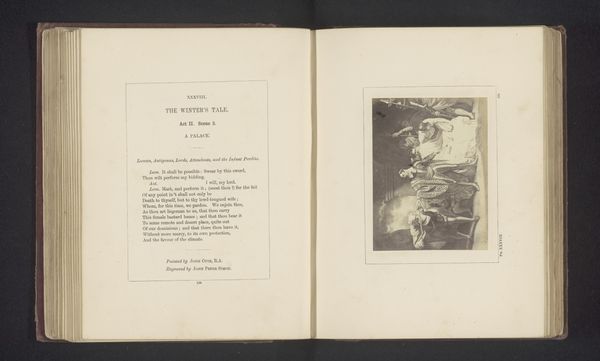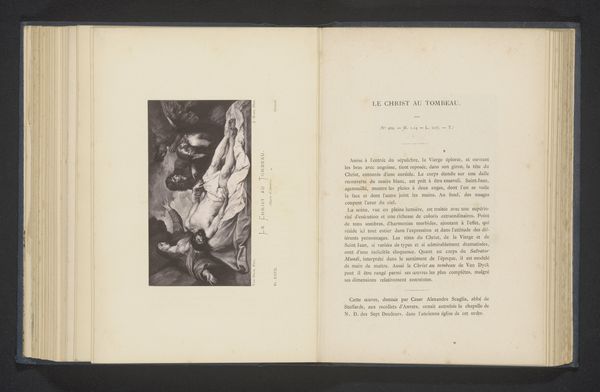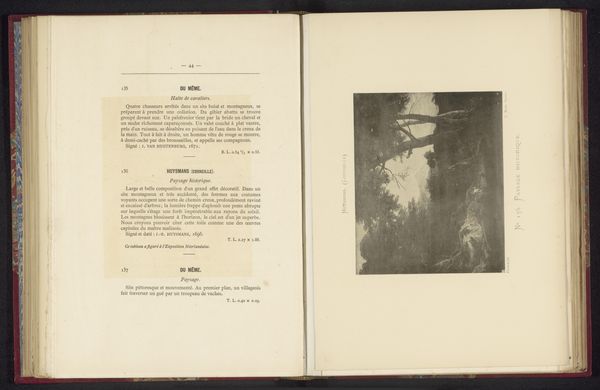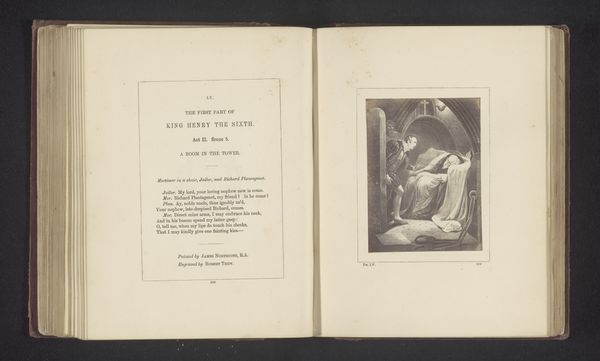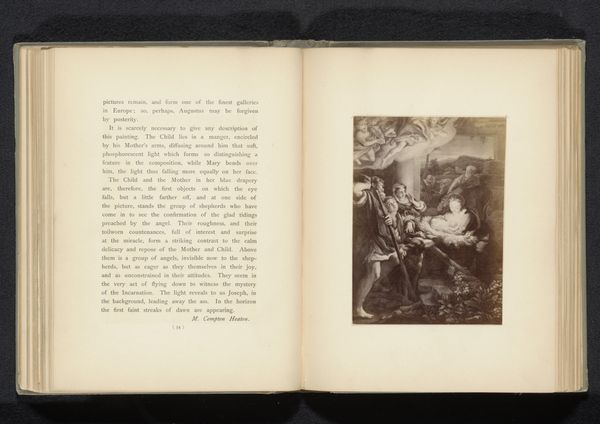
Fotoreproductie van een prent naar een schilderij door Robert Smirke en Joseph Farington, voorstellend een scene uit Hendrik IV door William Shakespeare before 1864
0:00
0:00
print, paper, engraving
#
narrative-art
# print
#
paper
#
text
#
history-painting
#
engraving
Dimensions: height 75 mm, width 96 mm
Copyright: Rijks Museum: Open Domain
Curator: This print, whose title translates to “Photographic Reproduction of a Print after a Painting by Robert Smirke and Joseph Farington, Representing a Scene from Henry IV by William Shakespeare,” dates to before 1864. It captures a pivotal moment from Shakespeare's play. Editor: My first impression? Intense darkness punctuated by this almost theatrical beam of light. The figures seem caught between worlds. What draws your eye first? Curator: Definitely that beam, it cuts through everything, doesn’t it? The stark contrast is used to bring certain details into focus, but more importantly, to draw the eye upwards. The flame or source becomes symbolic of divinity or enlightenment and the subjects below become aware, perhaps confronted. Editor: That divine light casts long, distorted shadows – are these figures escaping justice or enacting it? Are they noblemen, brigands, rebels, or simply players on a stage? Their ambiguity speaks volumes about the play’s exploration of moral compromise and power dynamics. I imagine Shakespeare knew the symbolic value of the characters' roles. Curator: Absolutely. Notice how the engraver uses incredibly fine lines to render fabric and foliage but then contrasts this detail with areas left rough, suggestive, even unfinished. This tension is critical. Are these supposed "heroes" truly acting nobly, or are they lost in some internal or external landscape that seeks meaning and light? Editor: The inclusion of textual fragments from the play beside the image adds another layer. "The Road to Gadshill" sets a geographical stage, but the surrounding dialogue provides hints about motivation and class struggles present in the selected scene and larger drama. It frames our understanding, right? Curator: Yes. These carefully chosen passages remind us that power comes at a cost. By including excerpts of dialogue between characters the engraving functions not just as an artistic impression, but as an annotated performance. This is art performing a dual purpose – documenting history and engaging the culture surrounding it. Editor: Looking closer has shifted my understanding – I initially perceived the print as a stark scene. Now, seeing that dual meaning in darkness and text, I sense a much subtler commentary about leadership and justice being played out against these dramatic lights and shadows. Curator: Indeed. I leave appreciating the dedication and care in the selection of these images from a historically-defining theatrical period and its visual communication techniques.
Comments
No comments
Be the first to comment and join the conversation on the ultimate creative platform.
